Renault is undergoing a renaissance. A new boss at the wheel, a pruning of the range and the imminent arrival of retro models from the brand's 1980s heyday.
While we wait for the return of the Renault 5, the French carmaker is introducing a new all-electric Megane to do battle with the likes of the VW ID.3 and Nissan Leaf. What Renault has delivered has a very real chance of overtaking its opponents.
For the fifth generation, the Megane has morphed its all-electric version into a quasi-family crossover. The fact the production car looks almost identical to the concept version is a testament to the new regime in place at the company.
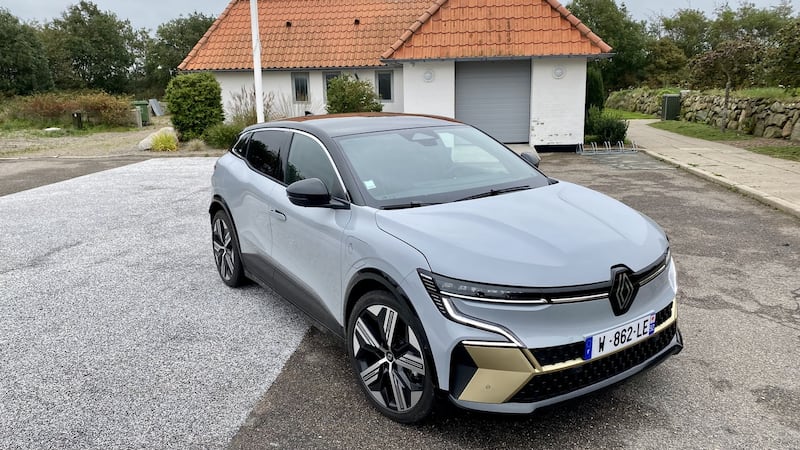
Renault's look has been overhauled in recent years under the guidance of acclaimed Dutch designer Laurens van den Acker. Van den Acker previously revamped Mazda in the 2010s and gave it a stylish family look; now he is practising his magic at the French car brand. And he has poached some top-end talent in the last few years, namely the former design boss at Peugeot, Gilles Vidal, and former Seat designer Alejandro Mesonero-Romanos. In the world of car design, Renault is starting to equate to PSG for its teamsheet of design talent.
This Megane is the first car in the Renault-Nissan Alliance to use its new CMF-EV platform, developed for its next fleet of electric cars (next up is Nissan's new Ariya). Two battery options are offered: 40kWh or 60kWh promising ranges of 300km or 470km respectively.
While others, like the ID.3, feature larger battery packs (the VW has a choice of 58kWh or 77kWh) the German rival does weigh in at roughly half a tonne heavier than its Renault rival. And when it comes to maximising range, weight really matters.
That’s why Renault has opted to use aluminium across the car, delivering a curb weight of 1.6 tonnes for the 60kWh version. Every element was put on a diet, and even the electric motor is 10 per cent lighter than the one found in the company’s little Zoe city car.
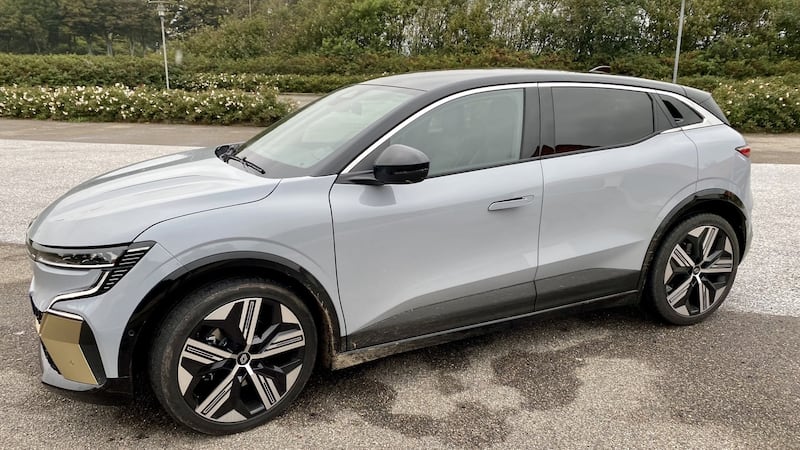
The ability to rapid charge is all the rage these days, and while this Renault can't quite match the times of a Porsche, Tesla or Kia/Hyundai, it can take up to to 130kW, with the company giving a time of 30 minutes to charge up the battery from from 15 to 80 per cent.
Our test car was powered by the 60kWh battery pack promising a range of up to 470km, though in real-world conditions engineers are saying its probably closer to 450km.
Power output of 218hp on the 60kWh version is hefty for a hatchback, even if it’s got some crossover creases, but it needs that sort of load-lugging ability for this Megane weighs in at 1.7 tonnes.
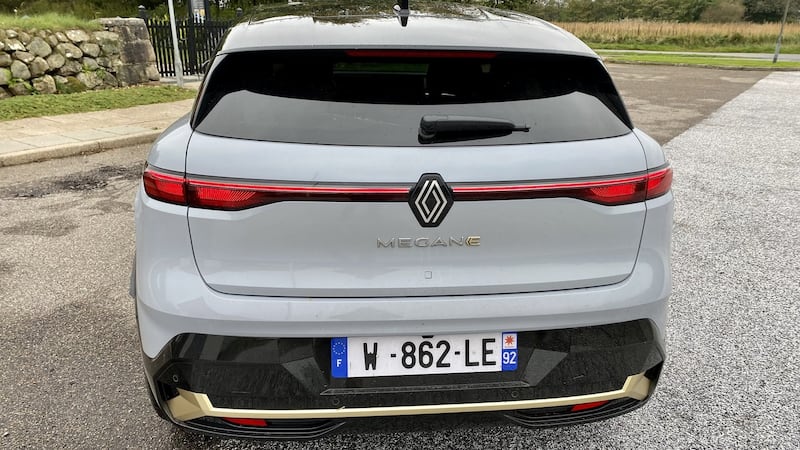
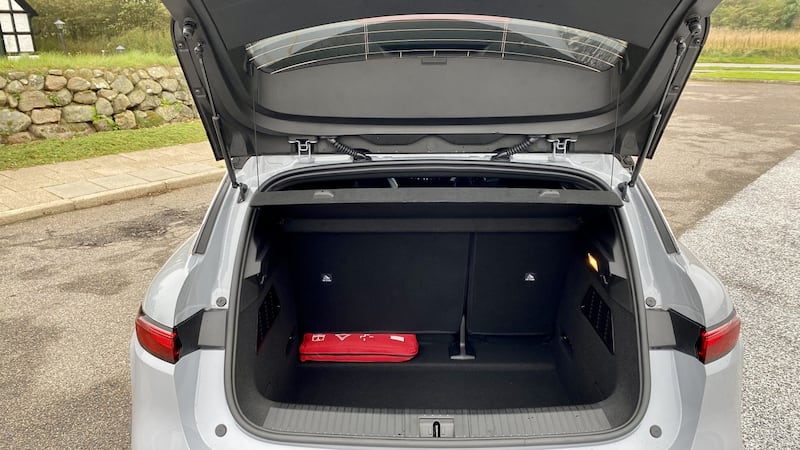
It’s perhaps not as pacy as you might expect, with a 0-100km/h time of 7.4 seconds unlikely to cause any concerns to Tesla owners, while a top speed of 160km/h means it will not be hurtling towards the horizon on the furthest overtaking lane of the German autobahns. Yet it’s nippy enough where it matters: for overtaking and weaving its way on national roads.
The new Megane is as soft and pliable as most French cars, and the ride is comfortable, even when shod with 20-inch alloys, something that can’t be said of other larger EVs launched recently.
Push the Megane into a bend and this front-wheel drive EV tends towards understeer – a typical trait of regular family hatchbacks. It’s easy to get the ESP lights flickering as well, though it does seem more dynamic on the road than either the Leaf or ID.3.
Renault’s engineers claim to have overhauled the power-steering system, delivering crisper responses and it shows out on the road. Unlike many mainstream French cars renowned for their relatively woolly steering feel, the Megane is impressively accurate and engaging. It’s all the more impressive for delivering its power through the front wheels yet avoiding any evident torque steer.
While the Megane looks quite like a chunky crossover, the five-seat interior is more in keeping with a regular hatchback. That’s because for all the muscular styling touches, the Megane E-Tech electric only stands 5cm higher than the regular hatch, and is actually shorter than it. There’s a decent boot round the back, bigger than the one on the outgoing regular Megane.
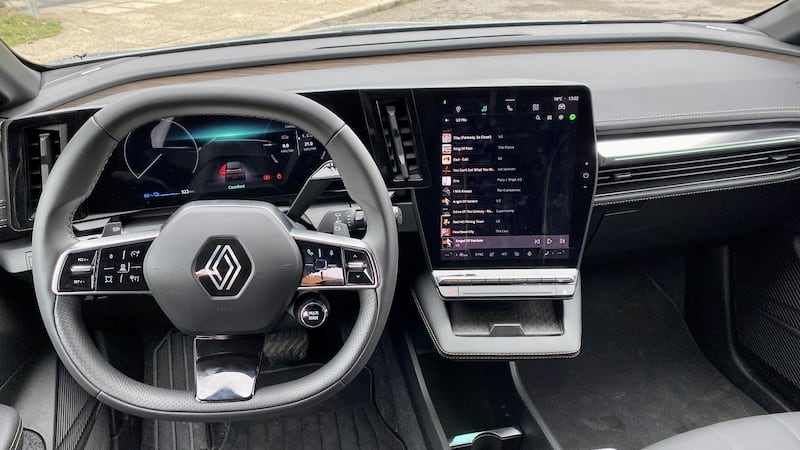
The big news in the interior is the massive leap in terms of the dash, featuring a dash-dominating 12-inch touchscreen on the central console that's nestled next to the 12.3-inch dial display for the driver. The system is powered by Google Tech, which means it deploys that firm's maps, apps and voice assistant. The good news is that it claims to be seven times faster and more reactive than Renault's current system.
What we have here is a car that looks better than the VW ID.3, is sharper to drive, better looking and seemingly more intuitively laid out. It also seems remarkably well put together.
It’s exciting times for Renault, but the real highlight will be the arrival of the new-generation Renault 5. If this electric Megane is a marker of what’s to come, then Renault have some very good days ahead.
Renault Megane E-Tech Electric EV60: the lowdown
- Power: 218hp electric motor powered from a 60kWh battery pack
- 0-100km/h: 7.4 seconds
- Range: 470km
- Price: TBA
- Verdict: Stylish family crossover will have its German rivals on the run.










